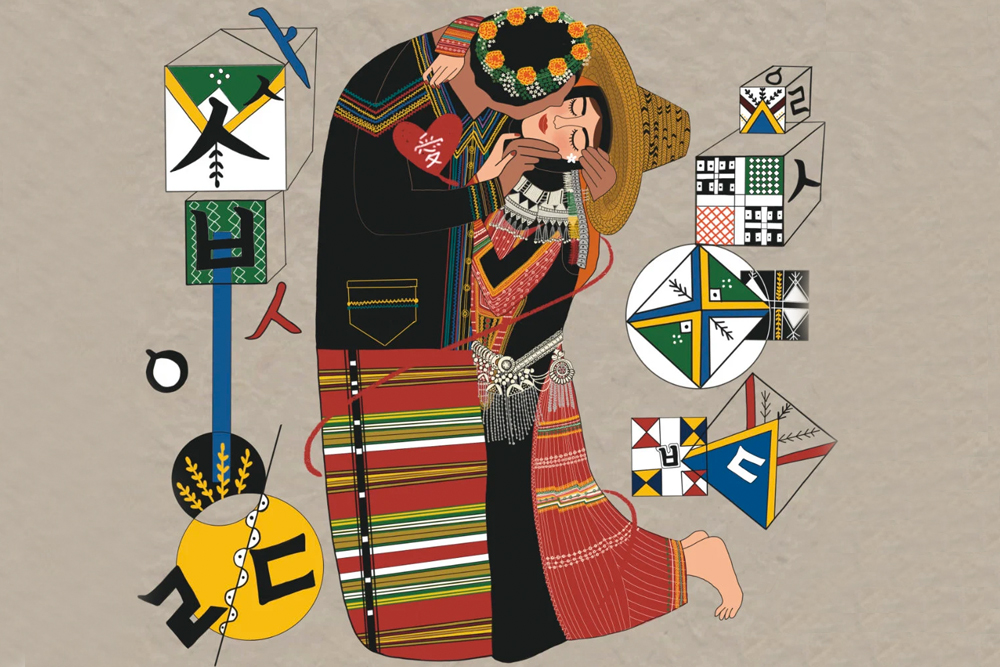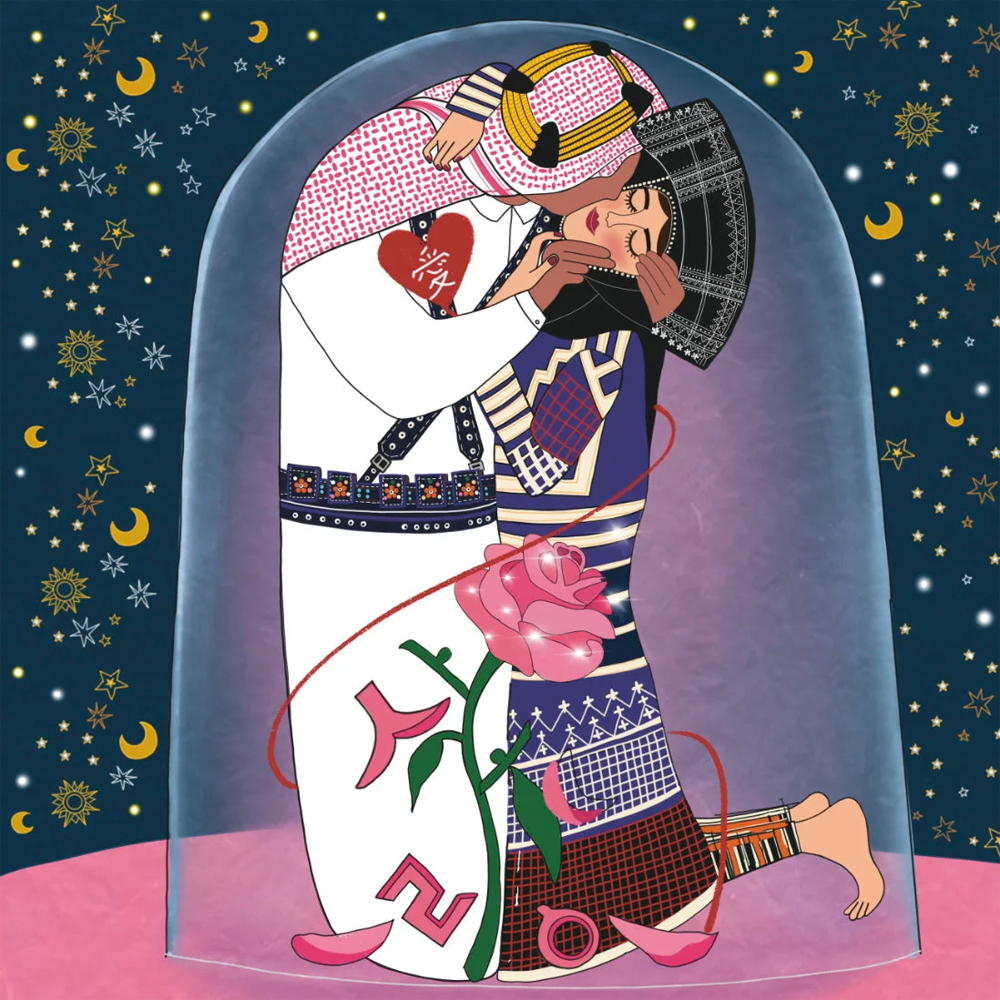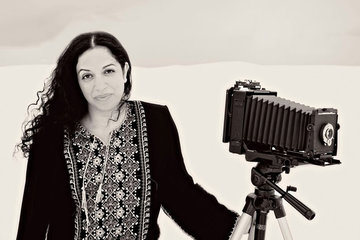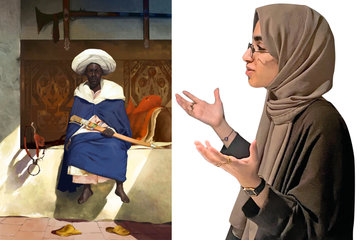
The traditional clothing of the Arab world is one of the most stunning and celebrated aspects of its culture, and South Korean digital illustrator Kim Sin-ae is showcasing it in the manner of influential 19th-century Austrian artist Gustav Klimt, notably his most well-known piece, "The Kiss."
Sin-ae has infused Korean writing with elements of Middle Eastern and North African culture. The final product is a fresh rendition of Klimt's artwork.
With its dazzling, vibrant love scene of two individuals embracing each other draped in a large golden cloak, Klimt's "The Kiss" is the epitome of love and compassion.
In her renditions of "The Kiss," Sin-ae added various cultural aspects, such as well-known sites, and 23 traditional garments from nations such as Saudi Arabia, the UAE, Syria, Egypt, Mauritania, and Morocco.

After touring galleries and museums while working as a flight attendant for Qatar Airways, Sin-ae told Arab News that she became passionate about art. While in Vienna during a stopover, she went to the Klimt Museum and fell in love with "The Kiss." She claimed that the COVID-19 pandemic was the catalyst for her own creative discovery. She then made the decision to focus on MENA culture in order to present Koreans with an alternative view of Arabs to that presented in the media.
She delved into Saudi Arabia's regional cultures in addition to using the most typical traditional attire in her illustrations. She created exquisite depictions of regional costumes from the western Hijaz, Taif, the southern Asir, and the central Kingdom.
The artist revealed that in addition to conducting her own study into each culture, she also reaches out to her fans to get references for each garment.
The outfit from Asir, according to Sin-ae, was particularly challenging since it reminded her a lot of Yemeni garb. She demanded detailed explanations of the distinctions between the two styles from Yemenis and Asiris.

Sin-ae accepts commissions from couples throughout the world who are married to a spouse from a different nation in order to further illustrate the beauty of cross-cultures. Couples from Singapore and Korea, Palestine and Brazil, Saudi Arabia and Argentina, and Jordan and the US have all been represented thus far.
Though most responses to her work have been complimentary, Sin-ae acknowledged that she occasionally encounters criticism, much like all other artists. She accepts the latter and says that just as it is her "freedom to produce art," so are others' rights to perceive it negatively. She also adds that she respects and values all of the emotions that people may have as a result of her work.

















